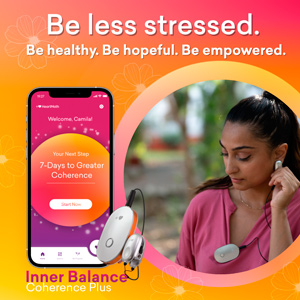Getting to Know Our Inner Worlds
There’s an outer world and an inner world. The outer world is the physical/material world we can experience with our senses, which registers in our inner world. We spend a lot of our lives concerned with the outer world, the other people in it, and what we should be doing in it. It’s marked by doing and having.
The inner world is a different dimension – one of thought, emotion, sensation, moods, desire, will, mindsets, attitudes, preferences. It’s marked by experiencing or being.
In the Western World, in North America where I grew up especially, we were taught all about the outer world and very little or nothing at all about our inner worlds.
People learned to effect change in themselves by manipulating something in the outer world. They learn skills, competencies, even mastery to do their jobs. We achieve success and happiness by doing things well. Accumulating things, even people who like us.
At the same time, it is said though, that we spend an inordinate amount of time in our heads, in autopilot. Nearly 50% of the time, our minds are wandering, we’re mentally checked out, and we’re not happier for it (see the study). In fact, there are things we do in our minds that not only don’t bring happiness, they lead to stress, anxiety and depression, and contribute to, or very well may lead to, physical pain and illness.
Misuse of the Mind
What are these patterns of thought? Since this isn’t an academic or therapeutic resource, we could go with something light like, Stinkin’ Thinkin’, or simply a “misuse of the mind and our imaginations”.
CBT (cognitive behavioral therapy – a type of psychotherapy) teaches people to identify what they call, Cognitive Distortions. ACT (acceptance and commitment therapy) helps people to identify Cognitive Fusion. Distortions are certain errors we make in our thinking that bend and twist the truth without us realizing it. Fusion is when we are so tightly stuck with our thoughts, including distressing ones but we can’t seem to stop or change our thinking.
In short, we use certain styles of thinking, think certain kinds of thoughts, and we end up feeling distress, anxiety, pain and suffering. As a result of this inner distress, we begin avoiding things that may trigger those thoughts and reactions, as well as actions we could be taking in life, and we end up a painful mess.
Avoidance can mean literally avoiding a person, place, or thing in the external world but it also includes trying to avoid thinking and feeling what troubles us by distracting ourselves, suppressing our emotions, or numbing ourselves.
If we can exacerbate (even cause) mental illness with our styles and patterns of thinking and feeling, something that happens automatically in our heads and bodies, didn’t someone think it would be a good idea to teach people from a very young age how to develop positive and empowering thinking patterns? They teach us general hygiene for our bodies and teeth but nothing for our minds and moods.
Sidenote: Perhaps with proper psycho-hygiene throughout life, we might not need as much psycho-therapy later in life.
The answer is, of course many have thought of this and have tried to champion initiatives to introduce mental and emotional wellness programs for decades, but only a modicum has been added to the curriculum.
Now that we’re adults, it’s up to us to educate and develop ourselves, and this may be why so many are interested in coaching – life coaching, career coaching, relationship coaching, self leadership coaching and more.
In business, and politics, even in sports, leadership is an important topic. How to influence and motivate others, how to manage them, how to inspire them, how to get them to trust you and follow you so you can all work together supporting a common cause, and for many the cause is increased profits. Nearly $400-billion is spent on leadership development each year, and it’s growing (source: Forbes).
How much are we investing in ourselves, as the leaders of our own inner worlds?
What is Inner Leadership?
This term’s been used in somewhat different contexts but at HeartRich, we consider inner leadership to be akin to developing self mastery and working towards self-actualization, even self-transcendence.
Inner Leadership is how we lead ourselves in our inner worlds – our thoughts, emotions, physiology, energy, and our will. Working a combination of ongoing, dynamic processes of leading oneself towards the heights of one’s potential, so we self-actualize and be who we truly are, nurture well-being, and live our values, while doing so in positive, healthy, sustainable ways that also recognize the needs and desires of others to do the same.
In Ancient Greece, they used a term called Arete – it meant excellence and was held above all other virtues. Basically, it meant expressing the best version of yourself moment to moment!
Instead of trying to change how we feel from the outside, by performing or achieving or influencing others, let’s look inside and learn how to lead ourselves effectively from within. It’s a seriously neglected area but critical for wellbeing and flourishing.
Inner leadership is about self awareness, self knowledge, self management, and self improvement.
It’s being aware of our state of being or state of consciousness – what’s going on inside our minds and bodies, our inner landscape, which includes our energy and vibe, our emotions, our impulses, our thoughts and desires, and having the capacity to optimize, in real time, how we’re living this moment, the meaning we’re making of what’s going on right now, what values and ideals we’re embracing, what we’re going to do, and how we’re showing up.
When things are going well, when all your needs are met, when the sun is shining and the world around you seems to be at peace, it’s easier to lead yourself well (though it is still hard for many) but it’s especially hard to get the best out of yourself when things aren’t going well, when your needs aren’t being met and continue to be threatened, when someone is triggering you and you feel fear or anger or pain of any kind.
When this is going on, our brain and nervous system go into alarm and we usually do what we did before to survive, to make it through – fight, flee, even freeze. We run and reinforce our old adaptive protective programs or patterns.
Our limbic system – our emotional brain – takes over and our highly intelligent and intellectual selves get drowned out or temporarily demoted. Our true selves get eclipsed. We get hijacked and flooded emotionally until we find safety, calm our selves down, ideally get some attunement and support from others, and then our social engagement system and rational brain come back to the forefront.
We don’t even need an external trigger to send us into alarm and automatic defense – even a thought can trigger us and we can perpetually reinforce a cycle of thought-alarm-defense – keeping our nervous systems in high alert, which doesn’t give our brains and bodies a chance to rest, digest and renew ourselves.
Claiming Response-Ability
With Inner Leadership, we are claiming the responsibility to be more aware of what’s going on inside, how we’re perceiving and living this moment, connecting to our hearts and embracing our values, shifting our state and vibe to a more coherent, balanced and positive one, so we can maintain a connection to our higher brains and choose how we wish to respond – we’re practicing response-ability. We can’t do that unless we claim the position of leader within.
When you invest the time and energy to take care of your inner world, you also have a greater awareness, respect and appreciation for others’ inner worlds and you realize that everything you do affects others – we are all interdependent. So, the better you lead yourself, the better your energy and vibe, the better influence and effect you will have on others, and the better their response to you.
We can realize this in our homes and foster a more positive and nurturing environment so we can be more aware, heart-centered, calm, open, attuned and flexible. This isn’t possible if we’re too stressed, not taking care of ourselves, living with a storm inside that can erupt into a category 5 hurricane – everyone can sense that and is affected by that.
We can realize this at work, whether or not we have a leader’s title, and not only improve our sense of contentment, engagement and fulfillment, we will make a positive contribution and have a richer effect on others we work with.
Ultimately, we should be learning this from a young age. I can only imagine the positive effect it would have and the incredible changes we could see unfold in the world if we raise the next generation to prioritize their personal wellbeing.
Inner work is what we do to develop inner leadership
The pillars of ‘inner work’ involve self discovery & development, awareness and mindfulness training, self regulation practices, nurturing positive emotion, cultivating courage and will, developing emotional intelligence and psychological flexibility. You can learn more here: Inner Leadership Skills and here: HeartRich Resilience Fundamentals.
If we are going to lead ourselves from within, what kind of leaders are we going to be? How can we lead ourselves well? Let us borrow from the leadership literature.
What are the qualities of the best leaders? Here are 10 qualities we see come up again and again:
- Integrity
- Accountability
- Empathy
- Humility
- Vision
- Positivity
- Communication
- Influence
- Competence
- Evolving/improving/growth
That’s very much how we should be within ourselves but often we aren’t any of those. Be honest, are you sometimes worse to yourself than any manager or leader you’ve ever worked for? These are common traits of poor leadership:
- Abusive
- Domineering
- Apathetic
- Negative, critical, cynical, pessimistic
- Unappreciative
- Cowardly
- Absent
- Irresponsible and Unaccountable
So to sum up, without effectively leading ourselves, managing thought, emotion and behavior in healthy, positive ways, we can succumb to pain and suffering, and sabotage or squander our respective potentials to lead rich, meaningful and fulfilling lives.
It’s up to each one of us to claim the responsibility of inner leadership and do our parts to lead ourselves well so we can experience greater inner peace, wellbeing, energy, and make a greater contribution by virtue of us being our best selves.
When you begin to work on inner leadership, you’re going to wonder, who is the inner leader? Is there one? Is it you?
More on that in the next article: What is Self Leadership? Who’s at the wheel?








I love it! I learned so much from this blog. Well written, interesting, and quite different than most coaching resources I come across. This is true thought leadership. Keep up the great work – I look forward to more from HeartRich! (PS – I’m looking into your Fundamentals program right now)
Thanks Annie! That means a lot. There’s more coming soon, and I do hope you like what you find in the Fundamentals program. If you have any questions, please be in touch. Wishing you peace and wellbeing!